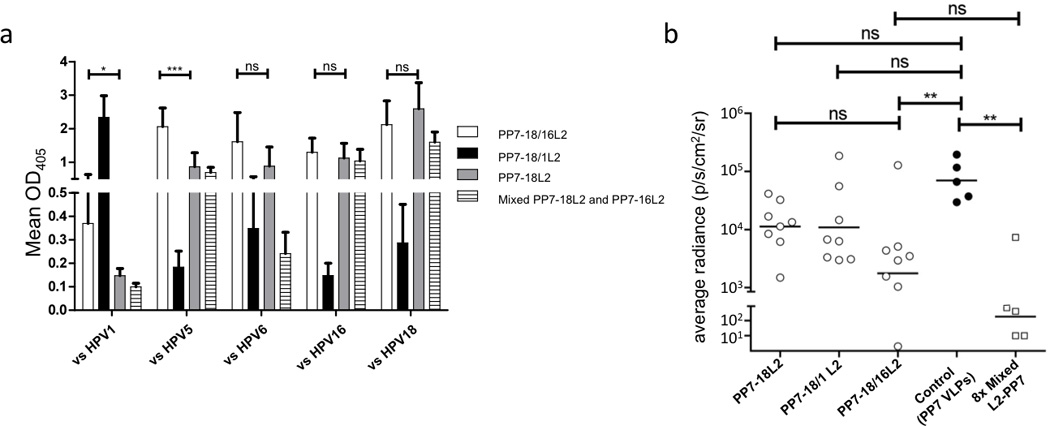Figure 3.

Immunogenicity and in vivo neutralizing activity of hybrid VLPs. A: Groups of eight mice were immunized three times with 5 µg of PP7 VLPs displaying the L2 aa 17–31 peptide from HPV18 alone, HPV18/1 or HPV18/16. Sera collected two weeks after the last immunization was tested for IgG binding to a selection of peptides representing amino acid 14–40 from five HPV types. Sera was diluted at 1:160. Bars indicate group means with standard deviations. Means of PP7-18L2 and PP7-18/16L2 groups were analyzed by two-tailed, unpaired t-tests (vs HPV1 data with Welch’s correction). B: Mice immunized with the indicated VLPs were vaginally challenged with 105 IU of HPV6 PsV encapsidating a luciferase reporter plasmid. Two days after PsV challenge, the mice were vaginally instilled with luciferin and imaged for luminescence. Each data point represents the average radiance for the region of interest (ROI; genital tract) of individual mice; lines representing the geometric mean of each group. The average radiance (p/s/cm2/sr) was calculated by using Living Image 3.2 software. Data were analyzed by a Kruskal-Wallis test with Dunn’s multiple Comparisons Test. * indicates p ≤ 0.05; ** indicates p ≤ 0.01; *** indicates p ≤ 0.001; ns, not significant.
